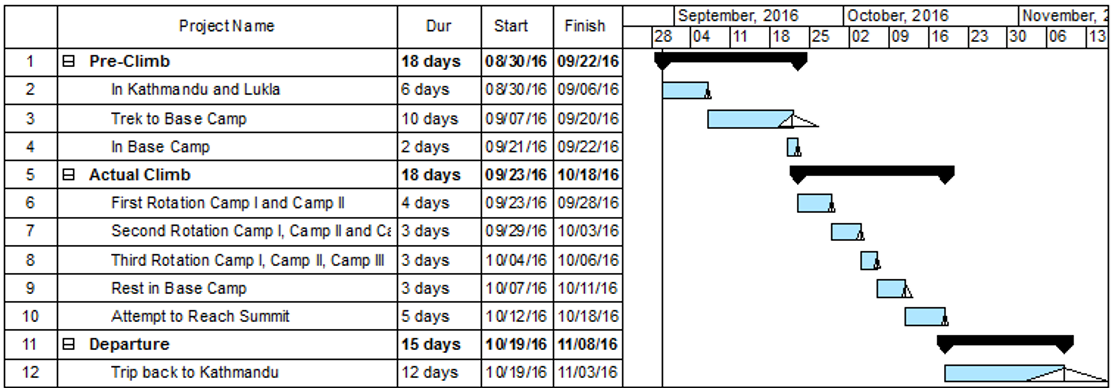Building on our last post, we will discuss how we can use Hierarchies to organize our portfolios Just as individual projects are made up of smaller, structured components—like summary and sub-activities—project portfolios follow a similar hierarchical structure. In a portfolio, these components are grouped into summary projects and sub-projects, creating an organized framework that enables more effective management, analysis, and execution.
Let’s explore this concept using a fascinating example: the Everest Climbing Project Portfolio.
The Hierarchical Structure of a Portfolio
In project management, structure brings clarity. A portfolio’s hierarchy allows decision-makers to zoom in on the details of sub-projects or zoom out for a high-level overview of the entire initiative. This is particularly useful when dealing with complex, multi-phase efforts like an expedition to Mount Everest.
Imagine each stage of an Everest expedition—planning the trek, setting up camps, acclimatization, summit attempts—as separate projects within a single portfolio. These projects can be visualized using tools like Gantt charts, which outline each project’s schedule and structure in a time-based format.
Fun fact: The Everest expedition schedule discussed here is based on a realistic plan from Berg International Adventures (2016
Assigning Tasks, Resources, and Risks
Each project within a portfolio is made up of tasks. These tasks have associated resources (like people, equipment, or materials) and risks, which can affect cost, duration, and success probability.
Risks and uncertainties are often modeled using statistical distributions. For instance, the expected duration of a task might not be a fixed number, but rather a range—expressed through a low, base, and high estimate. This is where tools like Monte Carlo simulation come into play. They allow project managers to assess the probability of different outcomes based on the range of possible inputs.
In our Everest example, the results of these simulations are visualized on the portfolio Gantt chart as triangles, representing the range of duration estimates for each project.
The Power of Portfolio Management Software
Most modern portfolio management tools offer a dynamic, interactive environment for viewing and managing hierarchical project structures. You can often drill down into individual projects directly from the portfolio view. This capability makes it easier to:
- View and analyze risk distributions for cost, time, and resources.
- Assign and track shared resources across multiple projects.
- Identify bottlenecks, overlaps, or delays caused by cross-project dependencies.
For instance, a delay in transporting gear to Base Camp in one project could affect the timing of acclimatization activities in another. These interdependencies can be modeled with predecessor-successor links, ensuring that schedules reflect real-world conditions and constraints.
Bringing It All Together
When managing a portfolio—whether it’s an Everest expedition, a product launch, or a digital transformation—it’s essential to understand how its hierarchical structure supports clarity, traceability, and control. With the right tools and methodologies, portfolio managers can analyze risks, allocate resources wisely, and make informed decisions that lead to successful outcomes.
Project portfolio hierarchies aren’t just an organizational preference—they’re a strategic necessity. Whether you’re climbing the world’s tallest mountain or leading a corporate initiative, the ability to structure, analyze, and manage interconnected projects is what turns ambition into achievement.


